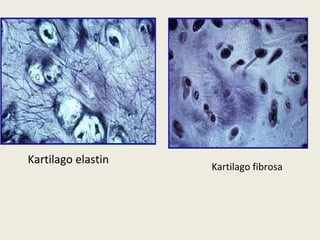Histofisiologi
- 1. Oleh : drh. ROSITAWATI INDRATI, MP Program Kedokteran Hewan Universitas Brawijaya
- 2. INTRODUCTION DESKRIPTIVE TERM : Gross Anatomy (Macros Anatomy) Embryology Comparative Anatomi Special Anatomi Anatomy Veteriner Systemic anatomy Topography anatomy • Histology (Micro Anatomy) - Patologi anatomi/histopathologi - Imunohisto
- 3. Histologi : ilmu yang mempelajari tentang jaringan secara morfologi yang normal >< Patologi Setiap se/jaringan organ mempunyai bentuk sel yang spesifik sesuai fungsinya
- 4. Other Lingual Papillae The remaining types of lingual papillae are sensory in function .Ěý They include:Ěý the fungiform papillae, which are less common than the filiforms; the vallate (or circumvallate) the largest and most prominent; and the foliate papillae, which are most easily seen in the Order Lagomorpha (rabbits,hares, and conies). Vallate Papillae
- 5. General Structure of Tubular Organs Innermost ( i.e. , closest to the lumen) - the outermost: 1. the tunica mucosa, 2. the tunica submucosa,3. the tunica muscularis externa, and 4. a tunica adventitia and/or tunica serosa L 1 3 2 4
- 6. Tract Accessory Glands of the Digestive Tract Liver LIVER
- 8. Ěý
- 9. Ěý
- 10. Ěý
- 11. Kartilago elastin Kartilago fibrosa
- 12. Struktur Mikroskopis Tulang Sistem havers Lamella Lacuna Kanalikuli 28/04/10 anat_muskuloskeletal/2010
- 13. Pertumbuhan pada tulang Bagian-bagian tulang panjang
- 14. Ěý
- 15. Ěý















